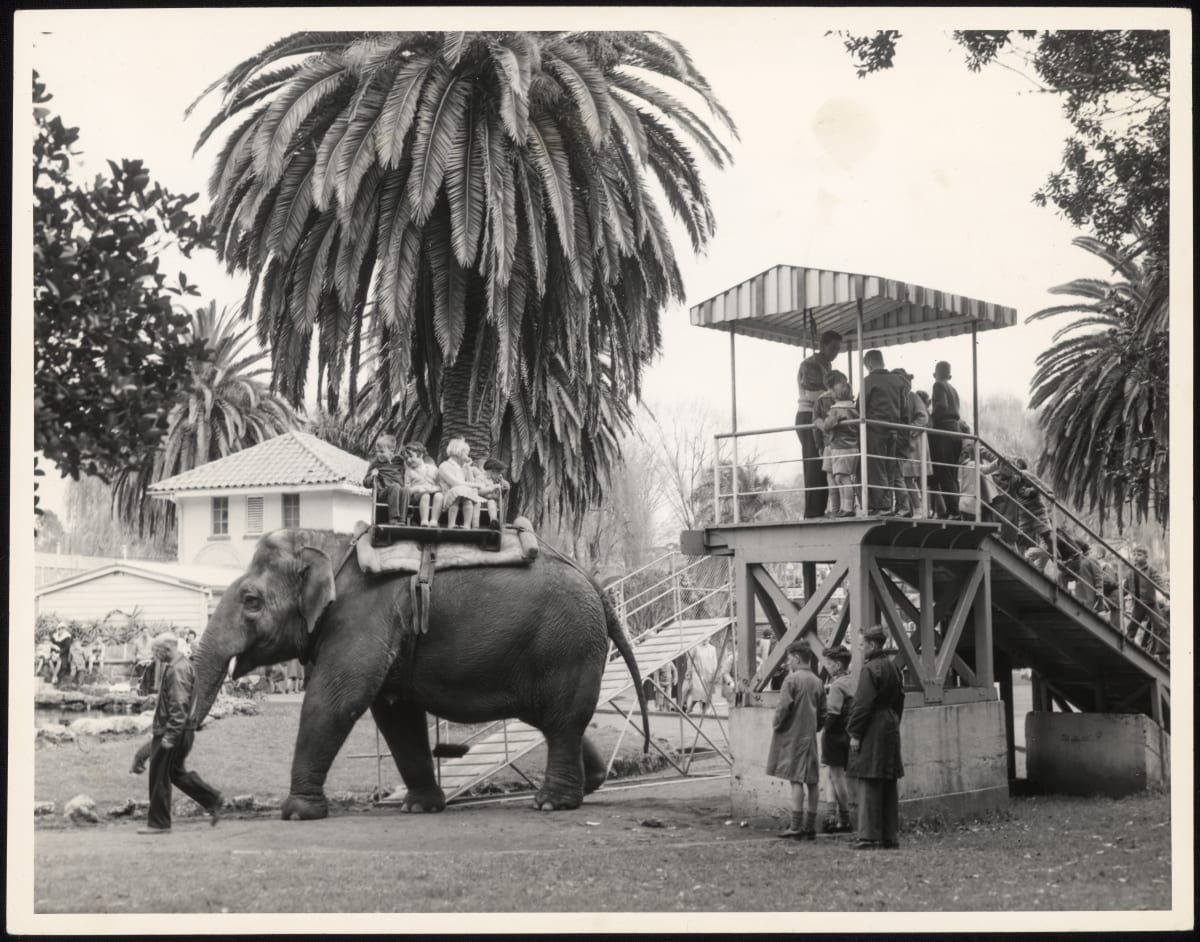
A century on from gates first opening, Auckland Zoo has evolved with the decades - now in an age of council budgetary pressures and ecological collapse, how does the institution face the future?
On a winter’s day in Auckland some 50 years ago, two council workers were shocked to discover a hippo swimming across a central Auckland park.
June, 1976. Screeds of torrential rain had enveloped the Auckland region for two days. Seas rose up and rivers broke banks. Two children drowned in Otara Creek after the usually placid creek turned into a raging torrent of water.
And over at Auckland Zoo, there was another young soul in peril. As the zoo-crossing Motions Creek rose more than 3m in the span of an hour, two-year-old Faith the hippopotamus was lifted up and over the boundaries of her enclosure and swept out into the wider world.
Several hundred metres away, two Auckland City Council depot workers were surveying the tumult in Western Springs Park, where Motions Creek and the lake had become one big mess of water.
It was here the two workers made out the shape of Faith swimming the churning waters occupying spaces usually reserved for dog-walking and goose-feeding.
They reported the roaming river mammal to the team of zookeepers who were still doing a headcount for the zoo’s population of six hippos in the chaos, and Faith was soon returned home no worse for wear and a little less wet behind the ears.
Zoo staff report once she was home, she could be heard loudly vocalising about her adventure to the rest of the bloat (that being the curiously fitting collective noun for a herd of hippos).
Faith lived at Auckland Zoo for more than 40 years - a life-long fixture that former keeper and current facilities manager Niki Walker said was a fierce mum who was full of personality.
“They come across as really big and ungainly and like they only float around in the pool all day - but they are actually incredibly active and really territorial,” she said. “Fudge (Faith’s son) was nearing 30 and she was still incredibly protective... they were great characters.”
In those 40 years, Faith must have watched the enormous changes New Zealand went through in that latter half of the 20th Century from her favourite wallowing spot in the mud. Not least of the changes she may have glimpsed from the water were those to Auckland Zoo itself.
But even with almost a half century of watching, Faith only saw half the story. This week Auckland Zoo turns 100, with the launch of a new book and exhibition detailing a storied history which shows the enormous changes that have taken place when it comes to its role in the landscape of the city.
The riverside pools where the hippos used to spend their time is now occupied by a large section of the zoo dedicated to the native flora and fauna of New Zealand.
What began as a tourism-focused menagerie designed as a kind of jewel in Auckland's crown, has slowly shifted its focus more and more towards conservation.

Zoo director Kevin Buley has been at Auckland Zoo for 12 years, after moving from the United Kingdom where he started his zookeeping career as a reptile and amphibian keeper at the Gerald Durrell-founded Jersey Zoo in the British Channel Islands.
“I’ve seen a lot of changes in the time I've been here, but those pale in significance compared to the changes we've seen over the last century,” he said.
The zoo was formally established in 1922 from pieces of entrepreneur J.J. Boyd’s council-closed menagerie in Onehunga. At the time, it served as a visitor attraction to a city of fewer than 100,000 people and a world of fewer than two billion.
“The city, the country and the world have changed beyond all recognition and with that massive increase in human population, it's brought about devastating effects for wildlife and wild places,” Buley said. “We've seen a shift in Auckland Zoo's role in the community from being a very well-intentioned, well-loved facility that family and friends could come and visit ... to an organisation that still offers that but does that alongside a vital conservation mission.”
The mission means the zoo has been involved in some of the big success stories of New Zealand conservation, including having bred and redistributed more than 6000 wētāpunga onto eight pest-free islands in the Hauraki Gulf and Northland, and providing a refuge for the global population of 36 cobble skinks when their West Coast home was threatened by Cyclone Gita.

Buley says zoos have been through several paradigm shifts throughout the decades.
“When I started 30 odd years ago the focus was on ‘arking’ - keeping species safe in zoos,” he said. “Now the role has moved on from simply being an ark to being a much more dynamic organisation with a significant role in the community connecting people with wildlife and making the zoo accessible to take people on a lifelong journey.”
The pandemic was a peculiar time for the organisation, with massive amounts of interaction from the public during lockdowns as regular visitors wanted to keep their relationship with the place alive. Buley said a silver lining from the pandemic was that it forced the zoo to grow its online offerings.
Renewals in funding from Auckland Council in the zoo’s recent history have allowed for site-wide renovations, including the recently-opened boardwalk through the zoo’s facsimile of a South East Asian jungle, where two gharials have recently arrived from a Danish zoo.
“It’s enabled us to redevelop what was a very ageing and failing site,” Buley said. “And in doing so we’ve been able to rebuild the zoo in a way that is much more reflective of a zoo in modern Aotearoa New Zealand rather than what was 20 years ago a very Western zoo.”
Case in point is the growing role the local wildlife plays with Te Wao Nui (the living realm) forming a significant chunk of the site with six uniquely New Zealand ecological environments on display.
And right near where the tuatara and kiwi hang their heads at night (or in the day as the case may be), you can still hear the lapping currents of Motions Creek, running under bridges and boardwalks past the pools where Faith and her family used to frolic.
It’s been six years since Auckland Zoo housed a bloat of hippos. The era closed when 41-year-old Faith was euthanised back in August of 2016, following signs of a fatal respiratory disease.
But while things have changed through the years at the zoo itself, it’s a tale that will perhaps knock about in the collective memories of Aucklanders in perpetuity: a rainy day, two council workers, and a massive African river mammal paddling through Western Springs Park.







